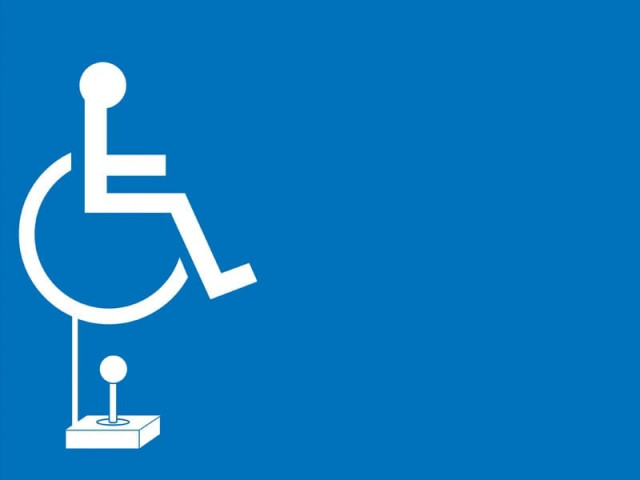Easy access: Motorised wheelchairs enable the disabled
Despite high costs, demand for this item has been steadily increasing.

Easy access: Motorised wheelchairs enable the disabled
Sidra, 12, whizzes around the mall in her new mechanically propelled wheelchair thrilled to be independent of her mother and sister as she shops for accessories. “This is a lot of fun,” she says excitedly when asked about the two-wheeled purchase she made a couple of months ago.
Her expression turns serious, “I was tired of everyone constantly pushing me around in my old [manual] wheelchair and I didn’t have the energy to push myself for very long.”
Sidra suffers from polio, a virus which has crippled hundreds of children in Pakistan. “First I would hate how other kids could jump around and play, but now with my new wheelchair I feel like I can have my own fun,” she said, with her eyes twinkling. But Sidra’s new ‘toy’ comes with a hefty price tag. Compared to manual wheelchairs which range from Rs5,000 to Rs10,000, mechanically propelled or motorised wheelchairs start at around Rs 75,000 and can cost up to Rs150,000.
Despite this, the demand for motorised wheelchairs has increased over the last six months, says owner for Rolls Royce Surgical in Saddar, Shuja Awan. “It has been about two years since people began demanding this product [motorised wheelchairs],” Awan told The Express Tribune. “But demand has significantly increased in the last six months though I can’t pinpoint a specific reason. However it may be important to note that the market for manual wheelchairs is simultaneously shrinking.”
According to Trademap.org, Pakistan imported around $175,000 worth of motorised wheelchairs in 2010. The chairperson for the Custom Agents Association Saif Khan estimates the number to be about 200 for the entire country. Awan, who is one of the main importers for motorised wheelchairs, says he imports around 20 a year. The top three countries imported from are Thailand, Taiwan and China, and the most popular type is the rear-wheel drive.
The users of motorised wheelchairs include the elderly, amputees and those with severe paralysis and those that are almost completely dependent.
Awan primarily offers Chinese brands. “Motorised wheelchairs can be ordered from Japan as well but the price will be five times higher than the Chinese ones.” In fact, according to Awan, the largest number of companies manufacturing motorised wheelchairs is in Taiwan and while some people also purchase UK and US products these makes “do not seem to be very popular in Pakistan.”
Amir Rafiq recently purchased a Chinese brand after five years of using one imported from the UK. Rafiq’s son Adil has muscular dystrophy — a group of muscle diseases which weaken the musculoskeletal system and affect locomotion. Well aware of Adil’s high level of dependency, Rafiq bought his 14-year-old son a fully loaded top-of-the-line motorised wheelchair costing Rs140,000.
This particular chair can not only be navigated around with a joystick but also erects itself helping the person using the wheelchair to stand.
“While these [motorised wheelchairs] are a great help they have their drawbacks,” Rafiq says.
Drawbacks include portability of the nearly 80-kilogramme chair, lack of a technical warranty, and the battery duration of just about one year. “These chairs can mostly be used within the house here,” he says. For longer trips the chair can be dismantled and reassembled but the process takes about 40 minutes making it too time consuming for quick stops. Vehicular carriers are required to transport the chair, but these are not easily available, if at all, in Pakistan.
The initial cost is not that high for Rafiq, but the maintenance costs add up to a substantial sum. Awan admits that after-sales guarantee is a major consumer concern. Any technical problems with the chair are mostly not serviced locally mainly because there is no local production. “Once purchased the service is minimal,” he says. “However, if there is any technical problem the system can be replaced... but at the consumer’s cost.” This is a pricey affair – replacing the joystick to navigate the wheelchair costs up to Rs20,000 and battery changes are priced at Rs4,5000. And for anyone with a spare Rs35,000, Awan has an alternative – convert the manual wheelchair a motorised one.
Published in The Express Tribune, January 6th, 2012.


















COMMENTS
Comments are moderated and generally will be posted if they are on-topic and not abusive.
For more information, please see our Comments FAQ